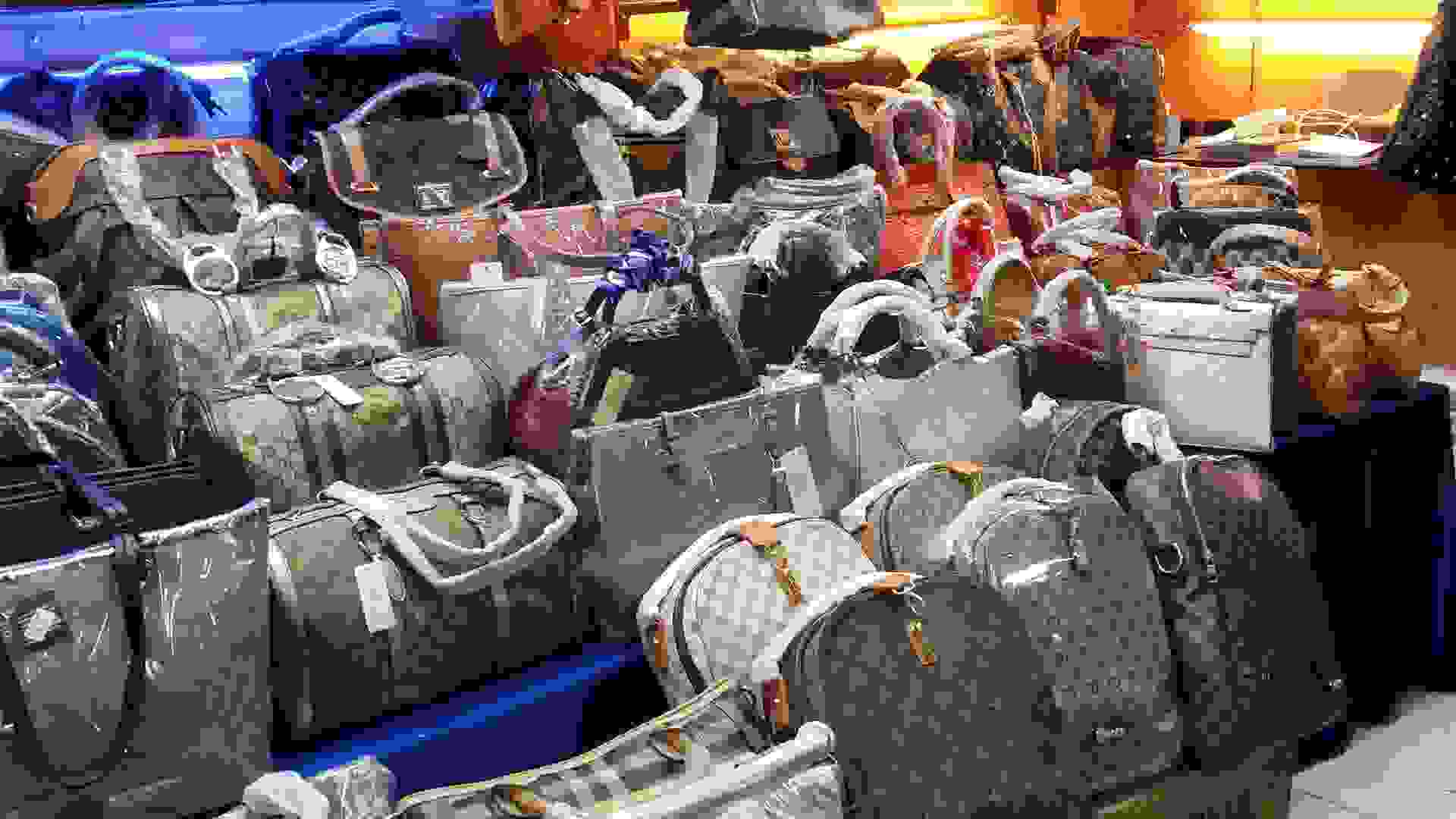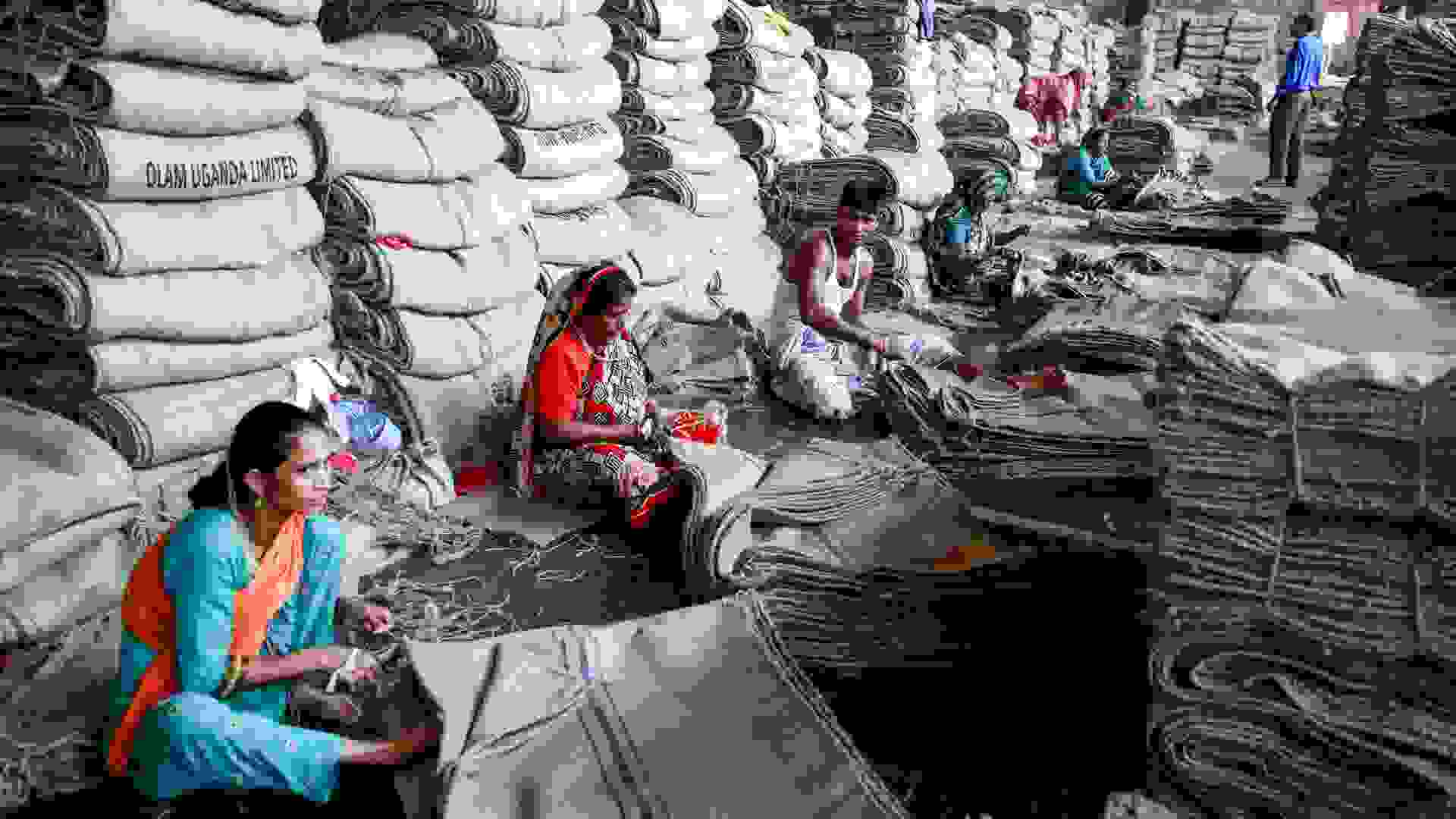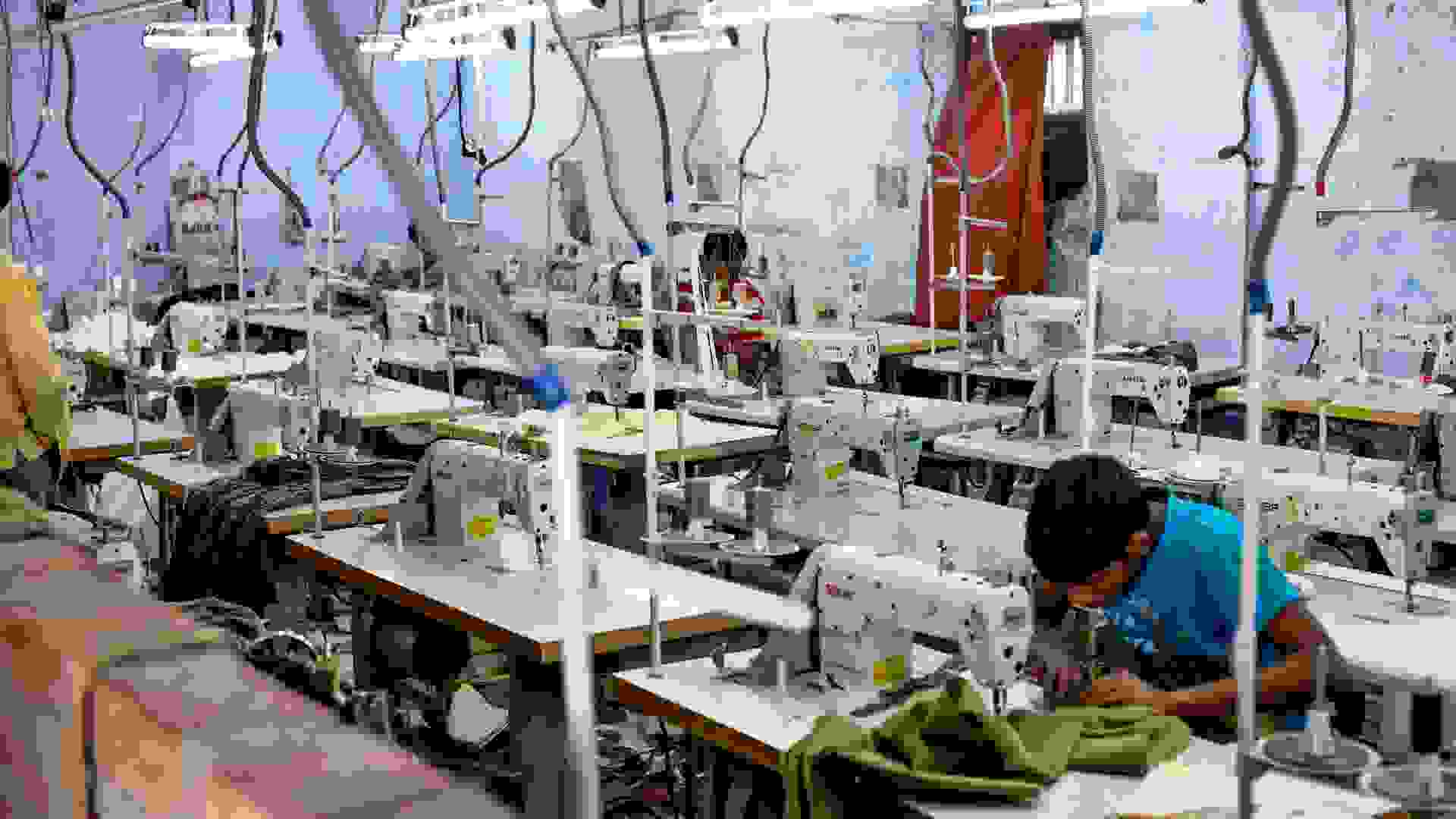How Much Does It Cost To Start A Fashion Blog
The Hidden Costs of Fast Fashion
The behind-the-scenes truth about cheap clothes.

Fast fashion can be likened to fast food: It's cheap and easy to find. And once you consume it, you're ready to move on. But there's more to the cost of fast fashion than just the thrill of plunking down a few dollars for one of the latest trends . From the waste that's produced to the deaths that have resulted, there are more hidden costs in this industry than you might ever have imagined.
Click through to read more about the high cost of fashion trends .

Cheap Clothes Don't Last
The ability to buy trendy, fashionable clothes for a bargain is one of the reasons people shy away from luxury shopping experiences and opt for fast-fashion retailers instead. For example, the average price point for an item from discount-shopping retailer H&M is $27.04, according to Katie Smith, retail analysis and insights director for Edited. But the adage, "You get what you pay for," applies in a big way to these garments. Fast-fashion retailers often opt for cheap materials, such as polyester, when making clothing instead of using natural and more sustainable choices, such as "better cotton." Plus, the fast-fashion industry's new garments transition quickly from design to sales floor, and t hose methods result in garments that can be sold at a cheap price, but they just don't last.

Quick Trends Prompt Shoppers to Buy Now
Fashion cycles are moving more quickly than ever. Fast fashion's retail release cycle for new fashion items is approximately four to six weeks. This cycle is much shorter than traditional fashion cycles of four to six months. The constant influx of items into these retailers leads to a problem for fast-fashion shoppers, especially with the option of online shopping and numerous cheap clothing sites. Shoppers end up having an abundance of low-quality, trendy clothing in their closets that they can't get rid of easily.

Tons of Clothing Fills Landfills Every Year
U.S. consumers throw out the equivalent of approximately eight large trash bags per year filled with clothes and accessories, according to a study commissioned by global thrift retailer Savers. Overall, that equals 26 billion pounds. The study also found that overflowing wardrobe closets are the No. 1 reason people get rid of their clothing, and one out of every three people who don't donate goods said it's just easier to throw their items away.

Fast Fashion Generates Textile Waste
Fast-fashion manufacturers often opt for cheaper materials like polyester, nylon and acrylic. Unfortunately, these types of materials will take hundreds to thousands of years to biodegrade. And even if retailers choose to create clothing from semi-synthetic fibers like rayon, Tencel or modal, the chemicals used in them during production can leach out into the ground if buried — or the air if incinerated.

Prints and Designs Are Stolen
In the world of fast fashion and cheap online shopping, it's not uncommon to see knock-offs from both famous designers and lesser-known independent ones. This is because fashion, even though considered an art, is exempt from copyright laws that protect areas like pieces of art, written works and films. Although there are ways to protect fashion designs, the processes often are timely and expensive. To keep fast-fashion manufacturers from stealing ideas, some fashion designers have opted to offer their designs for sale directly after fashion shows.

The U.S. Economy Can Suffer
Only about 3 percent of U.S. apparel manufacturing currently takes place domestically, according to Industry Week, a leading authority on U.S. manufacturing. Although it makes sense for companies trying to turn a profit to outsource labor, doing so contributes to the overall trade deficit in the U.S. and deprives Americans of much-needed jobs. According to Industry Week, getting rid of the U.S. apparel trade deficit would reduce the overall deficit by $120 billion or 25 percent and provide close to 1 million manufacturing jobs in the U.S.

Workers Abroad Are Exposed to Unsafe Conditions
Even though the tragic 2013 Rana Plaza factory collapse in Bangladesh, which killed more than 1,100 and injured 2,500, prompted many positive changes in the garment manufacturing industry, issues with safety still exist. For example, some of these overseas factories need major structural upgrades to meet safety standards, but the costs of these upgrades are prohibitively expensive. If the factories choose to continue operating without creating safe work environments for their employees, it's only a matter of time before another tragic accident occurs.

Workers Abroad Are Paid Low Wages
According to a year-long study of hundreds of workers in India, Cambodia and Bangladesh — conducted by Fashion Revolution and the C&A Foundation in February 2018 — workers in Bangladesh were treated unfairly. The study, called "Garment Worker Diaries," found that although workers' net earnings were above the minimum monthly pay requirements, workers were not paid overtime wage. After factoring in that cost, the study found that workers didn't receive a legal hourly wage 64 percent of the time.

Workers Abroad Are Forced to Work Long Hours
During the same "Garment Workers Diaries" study, Bangladesh factory workers were forced to work long hours . The study found that these workers worked more than the 60-hour legal limit per week 53 percent of the time. And, in 2016, inspectors with the Fair Labor Association found that workers in a knitting factory located in China were working much more than the legal limit of overtime hours on a regular basis. According to the report, the legally required limit for overtime hours is 36 hours per month, but workers were regularly working 17 hours of overtime per week.

Children Become Part of the Labor Force
Countries like Bangladesh are so mired in poverty that children go to work in factories instead of attending school. And it's not uncommon for children to lie about their age to get a job .
In the 2018 New York Times opinion piece "The Real Cost of Cheap Shirts" by Cláudia Brandão, Brandão recounts her experiences during her recent visit to Bangladesh factories: "When we asked the ages of people sewing 'NYC' onto T-shirts, they turned away from us." And Brandão also reported that one factory owner confessed that he was unable to follow all the rules — even the ones that are related to the employment of children — because he would have to raise prices.

Ways You Can Help
Now that you know the hidden costs of fast fashion, here are some ways you can help combat them. First, opt for items of quality rather than frequenting cheap clothing stores for trendy pieces to cut down on the amount of disposable fashion you consume. Next, choose to find ways to donate your clothing to those in need or recycle them instead of having your unwanted garments end up in a landfill. For donations, check out Goodwill, The Salvation Army or your local women's or homeless shelters. For recycling, check out USAgain to find a collection bin in your area.
More From GOBankingRates
- 20 Items to Avoid at Walmart
- 25 Stocks That Reached Their All-Time High This Year
- Travel Prep: 10 Financial To-Dos Before Going on a Trip
About the Author
How Much Does It Cost To Start A Fashion Blog
Source: https://www.gobankingrates.com/money/business/hidden-costs-fast-fashion/
Posted by: kennedymiltrared1985.blogspot.com

0 Response to "How Much Does It Cost To Start A Fashion Blog"
Post a Comment